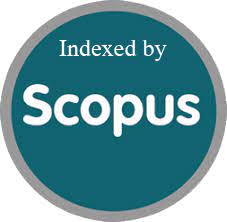Comparison of new scoring method, DEER scoring, in comparison to different endometrial pathology.
DOI:
https://doi.org/10.52783/jns.v14.3498Keywords:
diagnosis, abnormality, histopathology, bleeding, MenopauseAbstract
Background: Abnormal uterine bleeding (AUB) is not an uncommon occurrence and accounts for about 10-30% of chief complaints reported by women, with >30% of them occurring during the premenopausal phase & >70% of visits amongst peri and postmenopausal phase. Therefore, in order to overcome the shortcomings of the current diagnostic modalities, it is important to use a simple assessment cum diagnostic tool such as DEERS which can be implemented to screen women presenting with AUB.
Aims: To validate a non-invasive screening tool such as Disease of Endometrium Evaluation and Risk Scoring (DEERS) in woman with abnormal uterine bleeding in comparison to endometrial biopsy
Materials & Methods: A cross-sectional case control hospital based study was carried out amongst abnormal uterine bleeding patients attending Department of Obstetrics & Gynecology, JSS Hospital, Mysuru with 158 cases and 158 controls. Histopathological evaluation & DEERS scoring system was carried out to understand the efficacy of the new scoring system. Quantitative data was summarized using Mean (SD) with Student t-test, ANOVA used to test the significance with P value as <0.05 for statistical significance.
Results: Amongst cases 44.67% subjects were aged 51-60 years; however, amongst controls, majority of subjects (78.67%) who were aged ≤50 years. Histopathological evaluation revealed 45 endometrial hyperplasia without atypia, 27 disordered proliferation, 18 endometrial polyp, 6 endometrial malignancy and 9 endometrial hyperplasia with atypia cases with DEERS score showing 4 (2.67%) normal endometrium, 123 (82.0%) benign pathologies, 12 (8.0%) complex hyperplasia and 11 (7.33%) endometrial malignancies with mean scores of 8.0, 12.12, 19.5 and 26.91 respectively. In benign pathologies, we found sensitivity, specificity, PPV & NPV of 94.55%, 52.50%, 84.55% and 77.78% respectively, whereas it was 27.27%, 94.24%, 27.27% and 94.24% in malignant cases.
Conclusion: The new scoring diagnostic method was found to be effective in determining the type of lesions seen in abnormal uterine bleeding and in the current scenario when there is a lack of studies with respect to this system; we advocate it to be used as an adjunctive diagnostic modality. Also, we recommend more studies in this regard with a consideration for more factors to understand the role of other confounding factors which may determine the exact diagnosis.
Downloads
Metrics
Downloads
Published
How to Cite
Issue
Section
License

This work is licensed under a Creative Commons Attribution 4.0 International License.
You are free to:
- Share — copy and redistribute the material in any medium or format
- Adapt — remix, transform, and build upon the material for any purpose, even commercially.
Terms:
- Attribution — You must give appropriate credit, provide a link to the license, and indicate if changes were made. You may do so in any reasonable manner, but not in any way that suggests the licensor endorses you or your use.
- No additional restrictions — You may not apply legal terms or technological measures that legally restrict others from doing anything the license permits.










